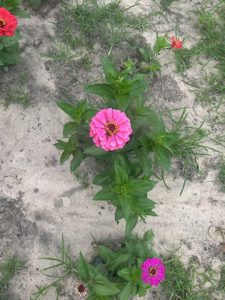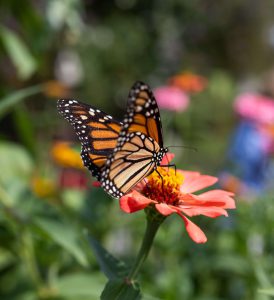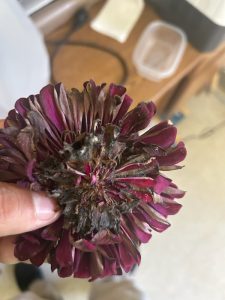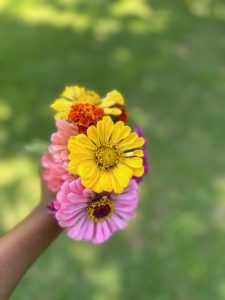Zinnias are well-known annual flowers, primarily recognized for their easy and fast growth. Their wide range of growing habits contributes to their popularity, as they can range from short and bushy to tall with a singular stalk. Regardless of their growing habit, Zinnias are prolific bloomers. They belong to the aster family and are native to Mexico and Central America, thriving particularly well throughout the South.
Zinnia Characteristics
There are three distinct types of Zinnias based on floral structure: single, double, and semi-double. The different floral structures do not necessarily correlate with plant habits. ‘Single’ refers to flowers that have only a single row of petals, with the center of the flower clearly visible. ‘Double’ Zinnias have multiple rows of petals, and the center is not clearly visible. ‘Semi-double’ cultivars exhibit a combination of traits, with flowers having multiple rows of petals while still maintaining a clearly visible center.
Pollinators and Zinnias
Zinnias are great for attracting pollinators, especially butterflies. Interplanting zinnias between rows of vegetables or as a border around vegetables is a great way to attract more pollinators to your garden. There are a few guidelines available for attracting butterflies to your yard using zinnias. The taller varieties are better than dwarf or compact cultivars, and those with wide, flat blooms provide a larger landing surface. Flowers should have prominent yellow centers (disc floret); double bloom varieties make it difficult for butterflies to access nectar. It is also possible that some varieties attractive to butterflies produce a larger quantity of and/or better-quality nectar than others.
Planting Zinnias
Zinnias perform better in garden beds than containers and, due to their ability to grow so quickly, can be direct seeded. To direct seed, the soil temp should be at least 70 degrees and plant the seeds at 1/4’” deep. Zinnias can also be planted as transplants and should be done once the soil warms to 60 degrees. Plant spacing can be anywhere from 8 to 12 inches depending on the plant’s habit. Singular stalk varieties can be planted closer together and bushier varieties should be given more space. Zinnias prefer full sun and well-drained soil. For longer flowering, remove the old blooms.
Zinnia Management
When planting zinnias, it’s recommended to incorporate a general-purpose fertilizer with equal parts nitrogen, phosphorus, and potassium into the soil. Following planting, monthly fertilization with a phosphorus-rich fertilizer is advisable to encourage continuous blooming. Maintaining adequate moisture is crucial for zinnias but avoid overwatering as they thrive in moderately dry conditions. To prevent fungal diseases, water only when the top 1-2 inches of soil are dry, focusing on watering the base of the plant rather than the foliage whenever possible. Powdery mildew is a common issue with zinnias, but it can be managed by applying a fungicide when necessary. However, it’s best to prevent this problem by ensuring good air circulation and avoiding wet foliage.
Zinnias as Cut Flowers
Zinnias, known for their vibrant charm, make delightful cut flowers that can brighten up indoor spaces for a week or longer. For optimal longevity, harvest the blooms when their centers are just beginning to unfurl fully. Trim away lower leaves and promptly place the cut ends into water-filled vases. Regularly refreshing the water helps prevent the growth of algae. When it comes to drying zinnias, double-flowered varieties are preferred as they tend to maintain their shape better than single forms. While all colors undergo slight changes during drying, cutting stems at their peak, removing leaves, and hanging them upside down in bundles away from direct sunlight facilitates the drying process effectively.
Zinnia – University of Florida, Institute of Food and Agricultural Sciences (ufl.edu)
FPS-623/FP623: Zinnia spp. Zinnia (ufl.edu)
- Zinnias 101 - April 11, 2024
- Jefferson County Pollinator Teaching and Demo Garden - February 29, 2024
- Native Fruit Trees – The Common Persimmon - November 2, 2023




